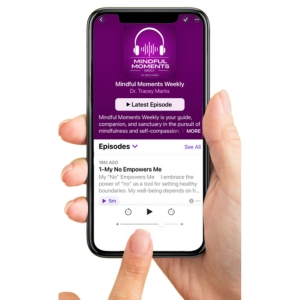Transform Your Brain Chemistry
Did you know that a single workout can change your brain chemistry within minutes? Even more remarkably, regular exercise can actually protect your brain from the harmful effects of stress. The relationship between physical movement and mental wellbeing runs far deeper than most people realize, and the science behind it is fascinating.
Products To Support You

Mindful Moments Subscription

Positive Prompts 22oz skinny tumbler
The Power of Neurogenesis
One of the most exciting discoveries in neuroscience is that exercise promotes neurogenesis – the growth of new brain cells.
This process primarily occurs in the hippocampus, your brain’s memory and learning center. This isn’t just theoretical; researchers using MRI scans have documented these changes, showing that regular aerobic exercise can increase hippocampal volume by up to 2% over a year. While that might sound modest, it’s significant enough to effectively reverse brain aging by 1-2 years.
This is particularly important because the hippocampus is sensitive to stress and naturally shrinks over time, especially when dealing with chronic stress or aging. Exercise acts as a counterforce, encouraging the production of new neurons and helping maintain cognitive sharpness and resilience.
Strengthening Your Brain’s CEO
Exercise doesn’t just affect the hippocampus – it also strengthens the prefrontal cortex, which functions as your brain’s chief executive officer. This region handles crucial executive functions like planning, decision-making, and emotional regulation. Regular exercise helps this area become more developed and better connected to other brain regions, leading to:
The Cellular Revolution: BDNF and Brain Health
At the cellular level, exercise triggers the release of Brain-Derived Neurotrophic Factor (BDNF), which acts like fertilizer for your brain. BDNF helps existing neurons form stronger connections while supporting the birth of new brain cells. During and after exercise, BDNF levels increase significantly, creating optimal conditions for brain cell growth and connection.
This process of neurogenesis was once thought impossible in adults, but we now know that exercise is one of its most powerful triggers. The new neurons form increasingly complex networks that enhance learning, memory, and emotional regulation, making your brain more resilient to stress and challenges.
Building Better Brain Infrastructure
Another crucial benefit of regular exercise is angiogenesis – the growth of new blood vessels in your brain. This improved circulation ensures better oxygen and nutrient delivery to brain cells and enhances communication between the prefrontal cortex and the amygdala (your brain’s fear center), leading to better emotional regulation.
This vascular improvement is particularly important because brain cells are extremely energy-hungry, requiring constant fuel to function properly. More blood vessels mean better equipment for handling demands and recovering from stress, while also helping clear away waste products that could contribute to cognitive decline.
The Timeline of Brain Benefits
The benefits of exercise unfold over different timeframes:
Immediate Benefits (Within Hours)
Within Weeks
After Several Months
Making It Work for You
The good news is that you don’t need to become a gym enthusiast to reap these benefits. Research suggests that 30-45 minutes of moderate exercise (like brisk walking) three to five times a week is ideal for mental health benefits. The key is consistency rather than intensity.
Start small and build gradually – even a 10-minute walk or some morning stretches can be beneficial. Choose activities you enjoy, as the best exercise is the one you’ll actually stick with. Whether it’s dancing, swimming, hiking, or gardening, pick something that brings you pleasure.
Timing Your Exercise
While morning exercise can help regulate your circadian rhythm and set a positive tone for the day, the best time to exercise is whenever you can do it consistently. However, if you exercise in the evening, try to finish moderate-intensity activities at least 90 minutes before bedtime to avoid sleep disruption.
The Bottom Line
Exercise is one of our most powerful tools for transforming mental wellbeing. Each time you move your body, you’re making an investment in your brain’s health and resilience. The changes are real, measurable, and within your reach. Remember, any movement is good movement when it comes to your mental health.

